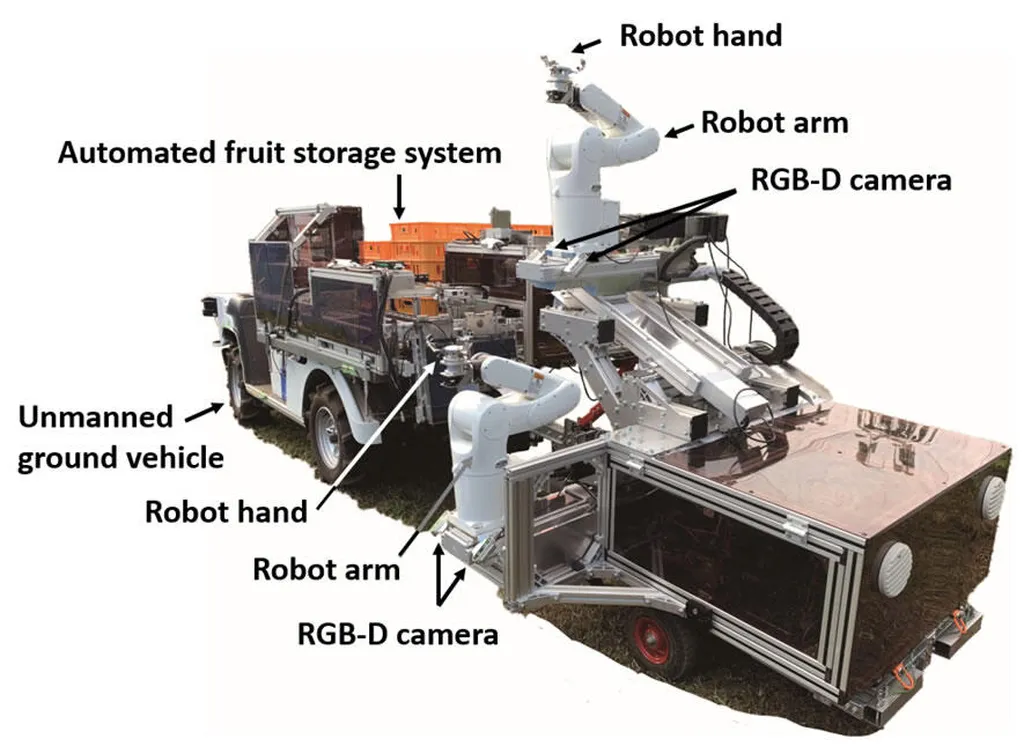In the heart of China’s Fujian Province, a quiet revolution is brewing in the orchards, one that could reshape the future of agriculture. Yikun Huang, a researcher at the School of Future Technology, Fujian Agriculture and Forestry University, is at the forefront of this change, leading a team that is developing intelligent fruit harvesting robots. Their latest work, published in the journal *Frontiers in Plant Science* (which translates to “Frontiers in Plant Science” in English), offers a comprehensive review of the visual perception technology that could make these robots a staple in modern farming.
The global agricultural sector is under immense pressure to increase productivity while reducing costs and environmental impact. Intelligent fruit harvesting robots, equipped with advanced visual perception technology, could be a game-changer. These robots are designed to identify, locate, and harvest fruits with precision, mimicking the delicate touch and keen eye of human workers.
Huang’s research delves into the intricate details of these technologies. “Visual perception is the backbone of any fruit harvesting robot,” Huang explains. “It’s what allows the robot to see, understand, and interact with its environment.” The team’s review covers a range of technologies, from different types of cameras used in the picking process to advanced object detection techniques that enable robots to accurately recognize and classify fruits.
One of the most compelling aspects of their work is the exploration of picking point recognition and localization technologies. These methods, which include vision-based 3D reconstruction and depth sensing, allow robots to determine the optimal point for picking a fruit, minimizing damage and maximizing yield. “It’s not just about picking the fruit; it’s about picking it in the right way,” Huang notes.
The research also highlights the role of active vision technology, which enhances the robot’s adaptability in dynamic environments, and visual servoing technology, which ensures precise localization. Moreover, the team discusses robot mobility perception technologies, such as Visual-SLAM (Simultaneous Localization and Mapping) and mobile path planning, which improve harvesting efficiency and facilitate better collaboration among multiple robots.
The potential commercial impacts of this research are substantial. As the global population continues to grow, so does the demand for food. Intelligent fruit harvesting robots could help meet this demand by increasing agricultural productivity and reducing labor costs. Furthermore, these robots could operate around the clock, unaffected by weather conditions or human fatigue, leading to more consistent and efficient harvesting.
Looking ahead, Huang and his team are optimistic about the future of this technology. “The challenges are significant, but so are the opportunities,” Huang says. “With continued research and development, we believe that intelligent fruit harvesting robots will become an integral part of modern agriculture.”
As we stand on the brink of a new agricultural revolution, Huang’s work serves as a reminder of the power of innovation. By harnessing the latest advancements in visual perception technology, we can create a future where robots and humans work side by side, cultivating the land and nourishing the world. The journey is just beginning, and the orchards of Fujian Province are leading the way.

